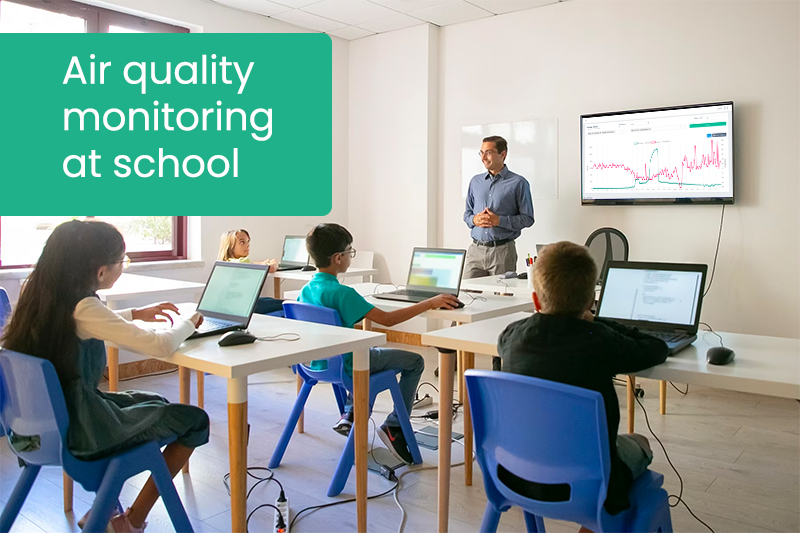Improving Indoor Air Quality in Schools with Air Quality Monitoring: Introducing HibouAir
Air quality monitoring at schools has become increasingly important as studies have shown that poor indoor air quality can have negative effects on children’s health and academic performance. Children spend a significant amount of time in school, and ensuring that they have access to clean air can have a significant impact on their overall well-being.
Poor indoor air quality can be caused by a variety of factors, including inadequate ventilation, high humidity levels, and the presence of pollutants such as dust, mould, and volatile organic compounds (VOCs). These pollutants can lead to a range of health problems, including respiratory issues, headaches, and fatigue. Studies have also shown that poor indoor air quality can negatively impact cognitive function and academic performance in children.
Educating children about air pollution and the importance of clean air is crucial in promoting healthy habits and reducing exposure to pollutants. Introducing air quality monitoring devices in schools can help raise awareness and encourage students to take action to improve indoor air quality.
One such device is the HibouAir, a real-time air quality monitoring device that provides historical air quality data. The device includes sensors for measuring CO2, PM 1.0, PM 2.5, PM 10, pressure, temperature, VOCs, light, humidity, and noise levels. The HibouAir is user-friendly and easy to operate, making it an ideal tool for use in schools.
With the HibouAir air quality monitoring solution, school administrators, teachers, and students can monitor the quality of the air in their school in real time. This allows them to identify areas where air quality may be poor and take steps to improve it. For example, if the device detects high levels of CO2 in a particular classroom, steps can be taken to improve ventilation or remove the source of the pollutants.
The HibouAir solution can also provide historical data on air quality, allowing schools to track changes over time and assess the effectiveness of interventions to improve air quality. This information can be used to inform future decision-making and ensure that schools are providing a healthy environment for students and staff.
There is a citizen science initiative called CleanAir@School organized by the European Environment Agency (EEA) and the European Network of the Heads of Environmental Protection Agencies (EPAs). More than 100 schools from 8 European countries participated in this initiative from 2018 to 2020. The school children measured pollution levels, learned about air quality and promoted actions for cleaner air.
The participating countries were Ireland, Malta, Estonia, Netherlands, Slovakia, Spain, UK/Scotland and Italy. Some observer environmental protection agencies were from Belgium/Flanders, Iceland, Sweden, Switzerland and UK/Wales.
In conclusion, air quality monitoring at schools is an important tool in promoting healthy indoor environments for students and staff. Poor indoor air quality can negatively impact health and academic performance, and educating children about air pollution and monitoring air quality can help promote healthy habits and reduce exposure to pollutants. The HibouAir is an excellent tool for monitoring air quality in schools, providing real-time and historical data to inform decision-making and promote healthy environments.

